Abstract
1 The technique of microelectrophoresis was used to compare the actions of methoxamine, noradrenaline and phenylephrine on single neurones in the somatosensory cerebral cortex of the rat.
2 Methoxamine evoked only excitatory responses on cortical neurones. The methoxamine-sensitive cells were also excited by phenylephrine; cells excited by methoxamine could either be excited or depressed by noradrenaline.
3 Methoxamine appeared to be less potent than either noradrenaline or phenylephrine in evoking excitatory responses.
4 Responses to methoxamine had a slower time course than responses to either noradrenaline or phenylephrine, both the latencies to onset and the recovery times being longer for responses to methoxamine than for responses to noradrenaline or phenylephrine.
5 When the absolute mobilities of methoxamine, noradrenaline and phenylephrine were compared using an in vitro method, no significant differences were found between the mobilities of the three ionic species, suggesting that the three drugs have similar transport numbers. Thus the differences in potency between methoxamine and the other two drugs, and the difference between the time courses of responses to methoxamine and the other two drugs, are presumably of biological origin.
6 The α-adrenoceptor antagonist, phenoxybenzamine, antagonized equally excitatory responses to methoxamine and noradrenaline, and responses to methoxamine and phenylephrine, without affecting responses to acetylcholine.
7 When responses to methoxamine and noradrenaline and responses to methoxamine and acetylcholine were summated on the same cells, the net responses were smaller than those expected on the basis of additive effects; the deviation from additivity was greater in the case of the summation of responses to methoxamine and noradrenaline than in the case of summation of responses to methoxamine and acetylcholine. This observation is consistent with the hypothesis that the interaction between methoxamine and noradrenaline follows the model of competitive dualism, whereas the interaction between methoxamine and acetylcholine follows the model of functional synergism.
8 The results suggest that methoxamine may act as a partial agonist at excitatory α-adrenoceptors on cerebral cortical neurones.
Full text
PDF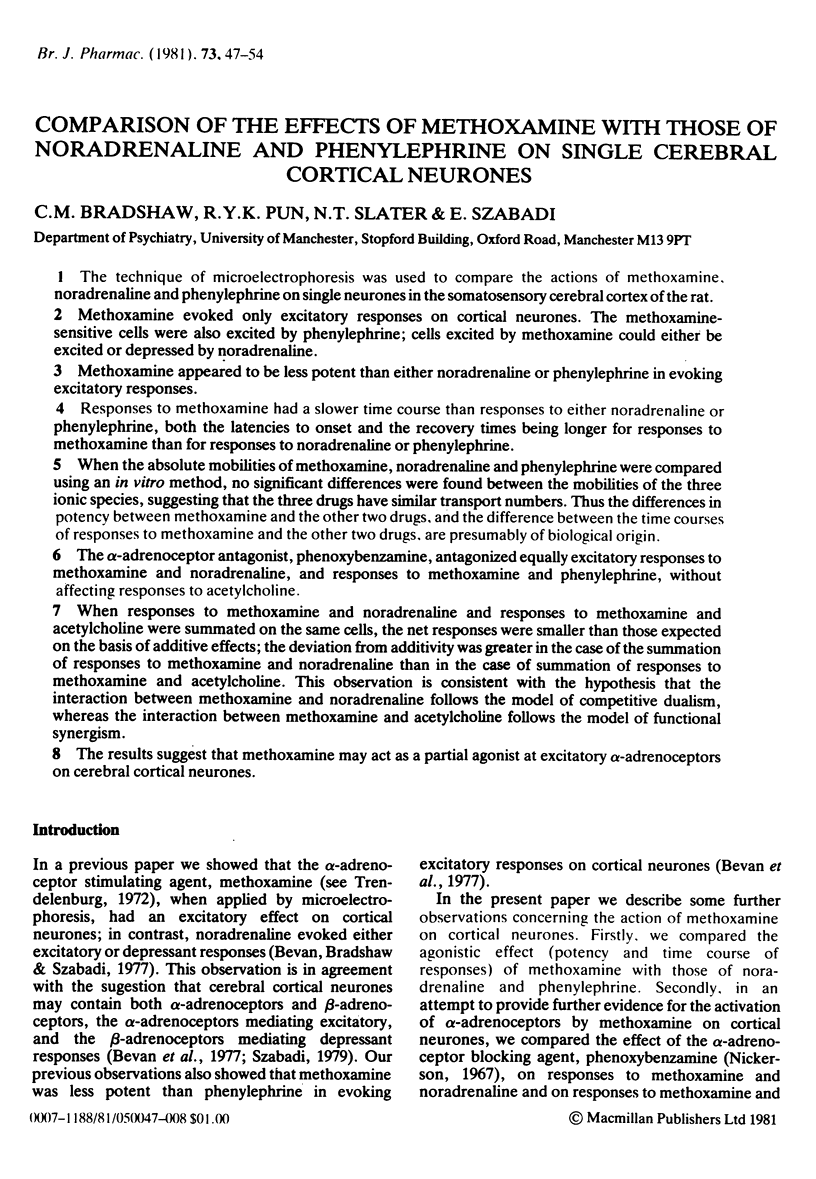
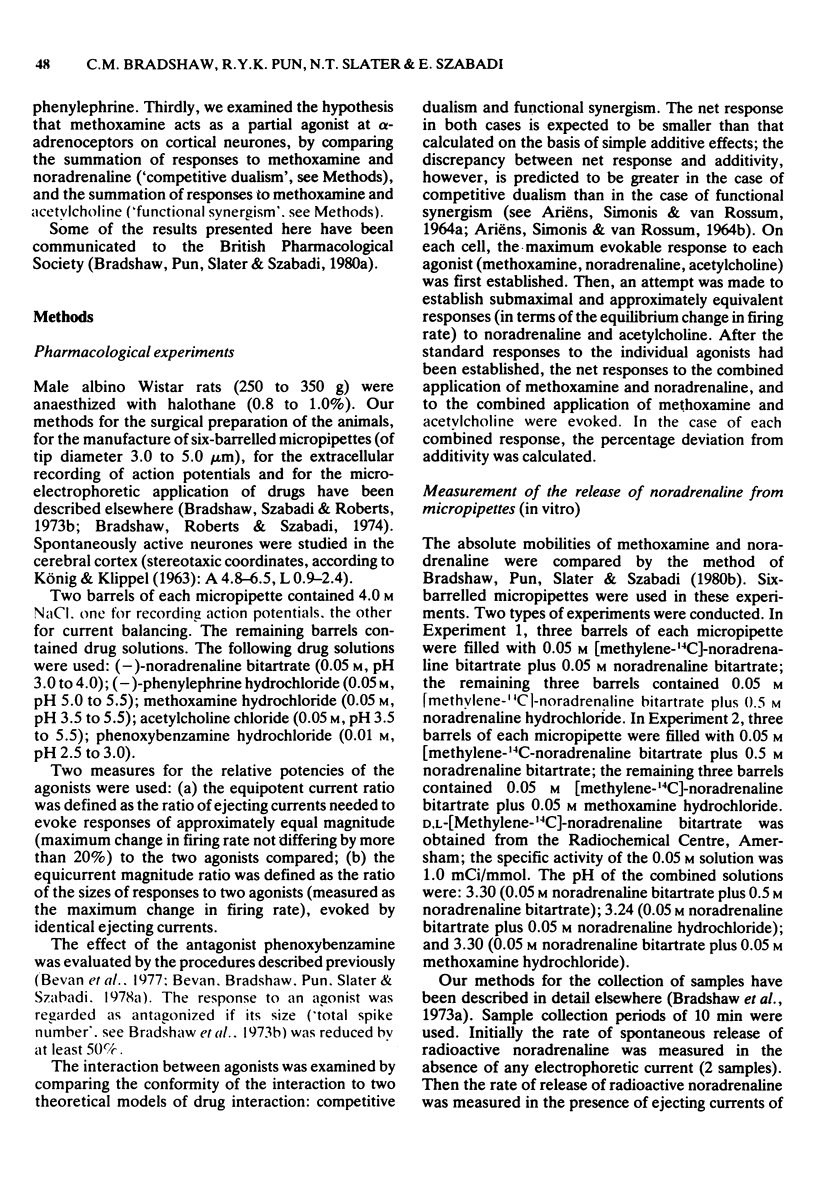
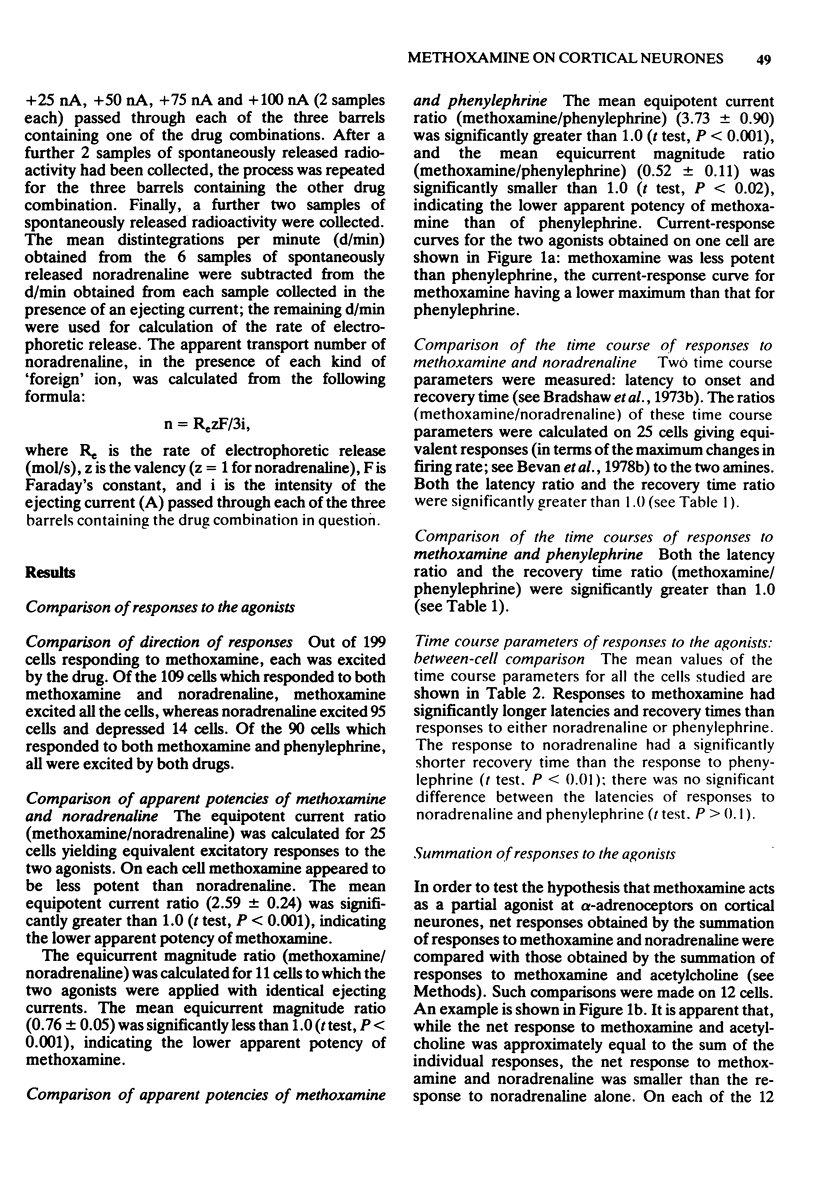
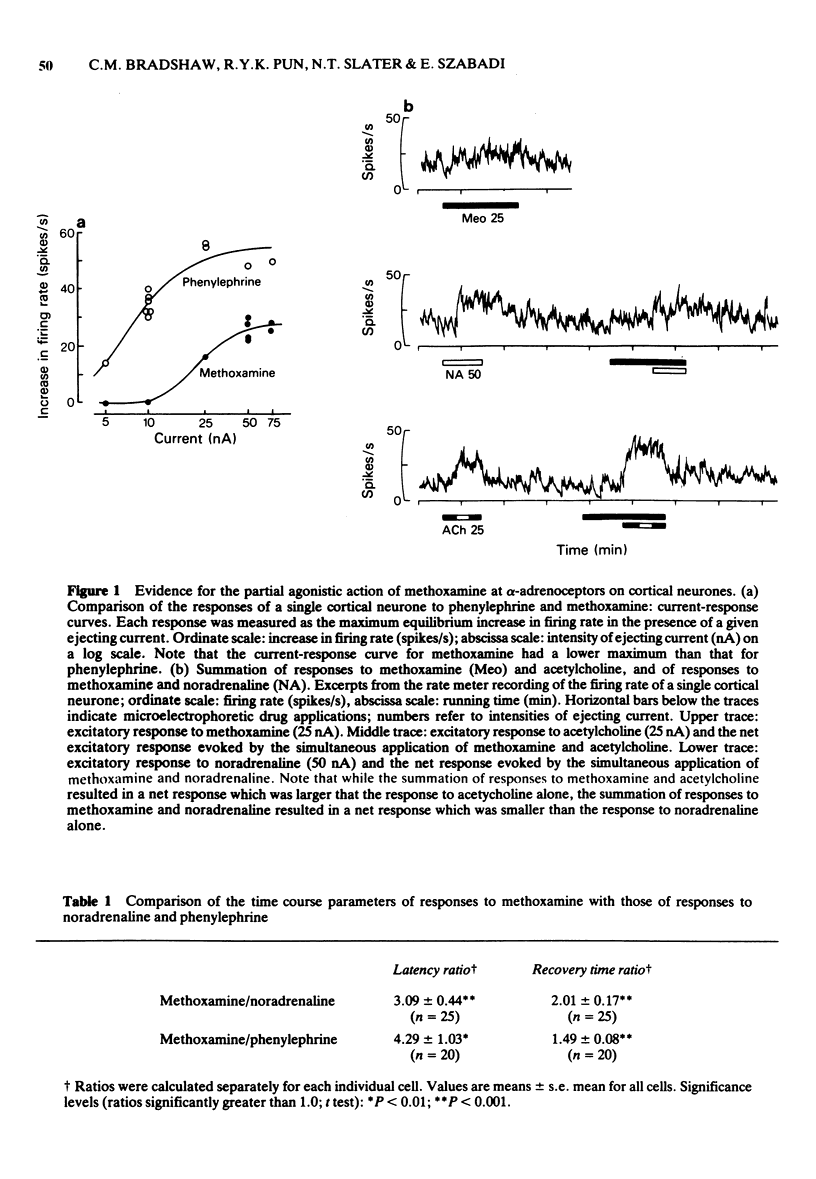


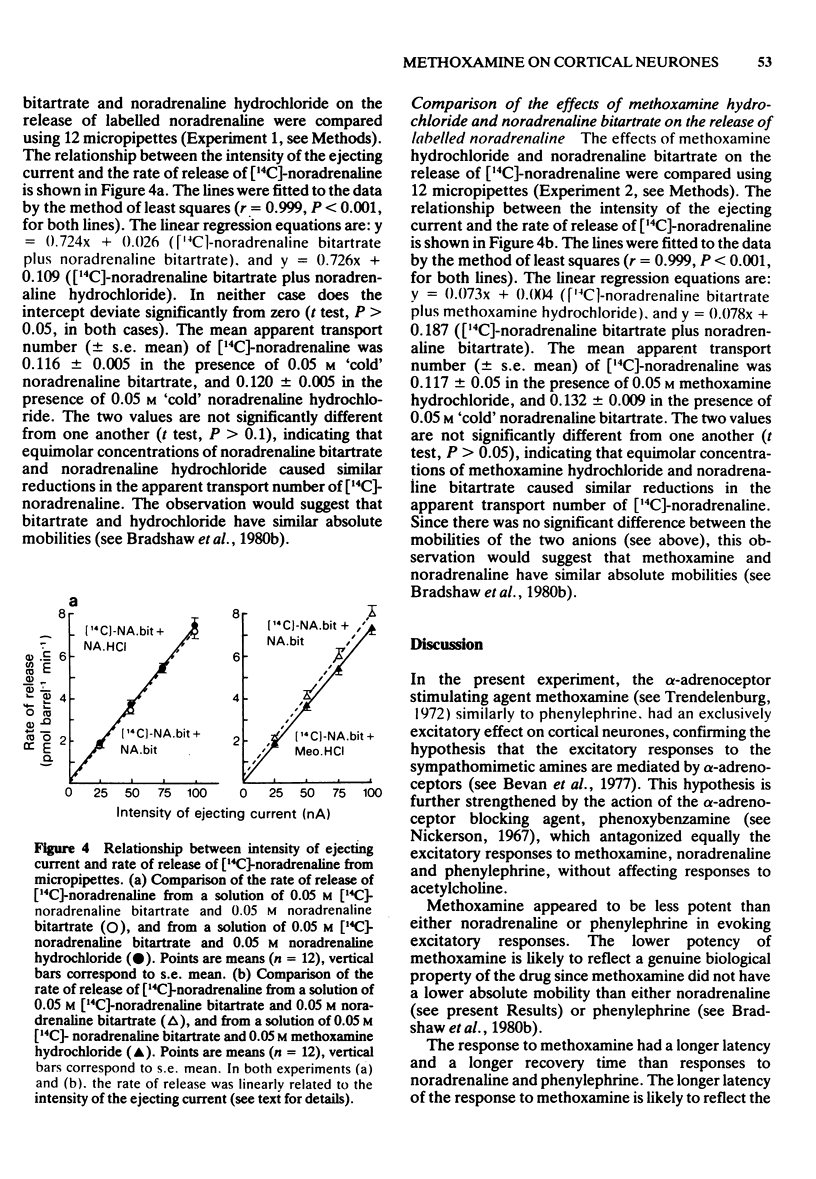
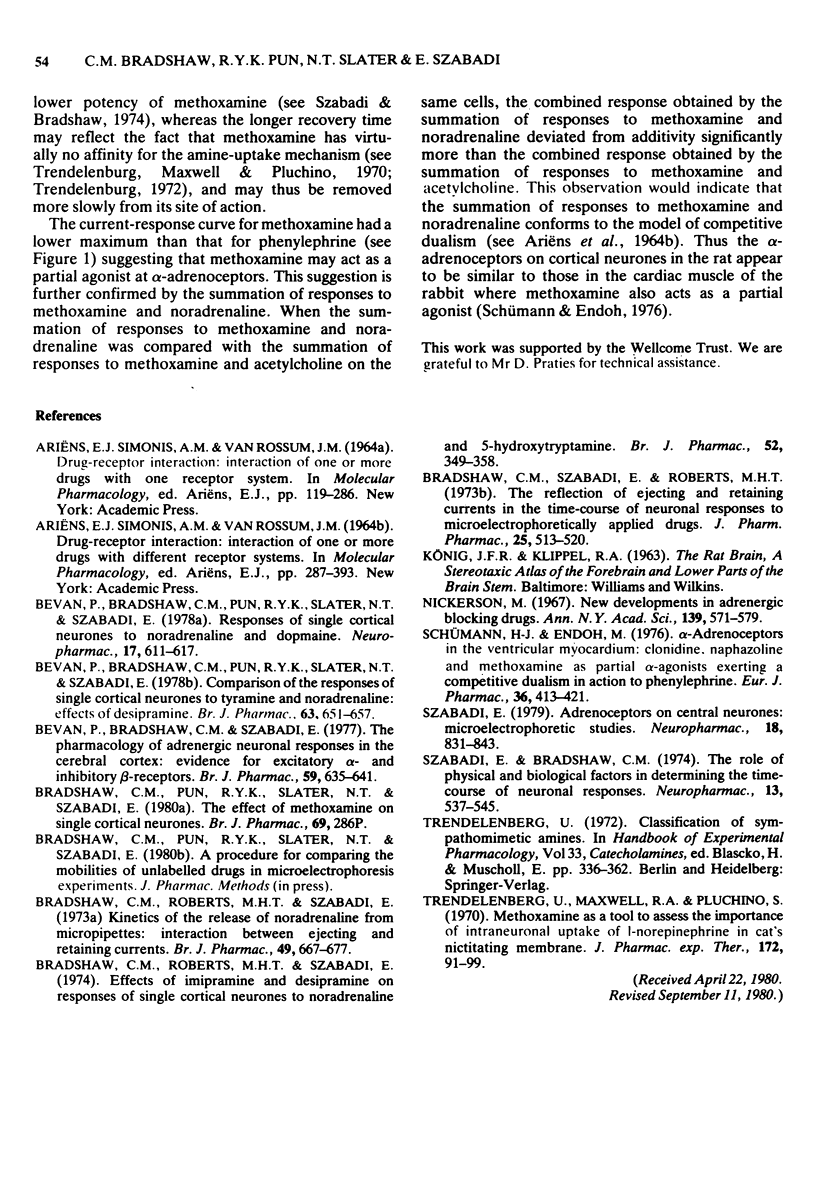
Selected References
These references are in PubMed. This may not be the complete list of references from this article.
- Bevan P., Bradshaw C. M., Pun R. Y., Slater N. T., Szabadi E. Comparison of the responses of single cortical neurones to tyramine and noradrenaline: effects of desipramine. Br J Pharmacol. 1978 Aug;63(4):651–657. doi: 10.1111/j.1476-5381.1978.tb17278.x. [DOI] [PMC free article] [PubMed] [Google Scholar]
- Bevan P., Bradshaw C. M., Pun R. Y., Slater N. T., Szabadi E. Responses of single cortical neurones to noradrenaline and dopamine. Neuropharmacology. 1978 Aug;17(8):611–617. doi: 10.1016/0028-3908(78)90156-9. [DOI] [PubMed] [Google Scholar]
- Bevan P., Bradshaw C. M., Szabadi E. The pharmacology of adrenergic neuronal responses in the cerebral cortex: evidence for excitatory alpha- and inhibitory beta-receptors. Br J Pharmacol. 1977 Apr;59(4):635–641. doi: 10.1111/j.1476-5381.1977.tb07732.x. [DOI] [PMC free article] [PubMed] [Google Scholar]
- Bradshaw C. M., Roberts M. H., Szabadi E. Effects of imipramine and desipramine on responses of single cortical neurones to noradrenaline and 5-hydroxytryptamine. Br J Pharmacol. 1974 Nov;52(3):349–358. doi: 10.1111/j.1476-5381.1974.tb08602.x. [DOI] [PMC free article] [PubMed] [Google Scholar]
- Bradshaw C. M., Roberts M. H., Szabadi E. Kinetics of the release of noradrenaline from micropipettes: interaction between ejecting and retaining currents. Br J Pharmacol. 1973 Dec;49(4):667–677. doi: 10.1111/j.1476-5381.1973.tb08543.x. [DOI] [PMC free article] [PubMed] [Google Scholar]
- Bradshaw C. M., Szabadi E., Roberts M. H. The reflection of ejecting and retaining currents in the time-course of neuronal responses to microelectrophoretically applied drugs. J Pharm Pharmacol. 1973 Jul;25(7):513–520. doi: 10.1111/j.2042-7158.1973.tb09150.x. [DOI] [PubMed] [Google Scholar]
- Nickerson M. New developments in adrenergic blocking drugs. Ann N Y Acad Sci. 1967 Feb 10;139(3):571–579. doi: 10.1111/j.1749-6632.1967.tb41230.x. [DOI] [PubMed] [Google Scholar]
- Schümann H. J., Endoh M. alpha-Adrenoceptors in the ventricular myocardium: clonidine, naphazoline and methoxamine as partial alpha-agonists exerting a competitive dualism in action to phenylephrine. Eur J Pharmacol. 1976 Apr;36(2):413–421. doi: 10.1016/0014-2999(76)90095-9. [DOI] [PubMed] [Google Scholar]
- Szabadi E. Adrenoceptors on central neurones: microelectrophoretic studies. Neuropharmacology. 1979 Nov;18(11):831–843. doi: 10.1016/0028-3908(79)90079-0. [DOI] [PubMed] [Google Scholar]
- Szabadi E., Bradshaw C. M. The role of physical and biological factors in determining the time course of neuronal responses. Neuropharmacology. 1974 Jun;13(6):537–545. doi: 10.1016/0028-3908(74)90143-9. [DOI] [PubMed] [Google Scholar]
- Trendelenburg U., Maxwell R. A., Pluchino S. Methoxamine as a tool to assess the importance of intraneuronal uptake of l-norepinephrine in the cat's nictitating membrane. J Pharmacol Exp Ther. 1970 Mar;172(1):91–99. [PubMed] [Google Scholar]


